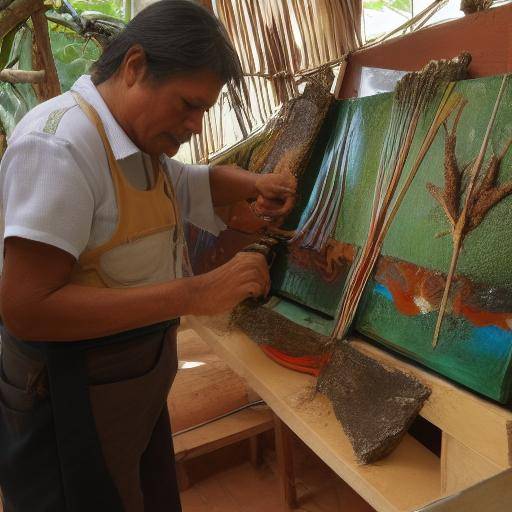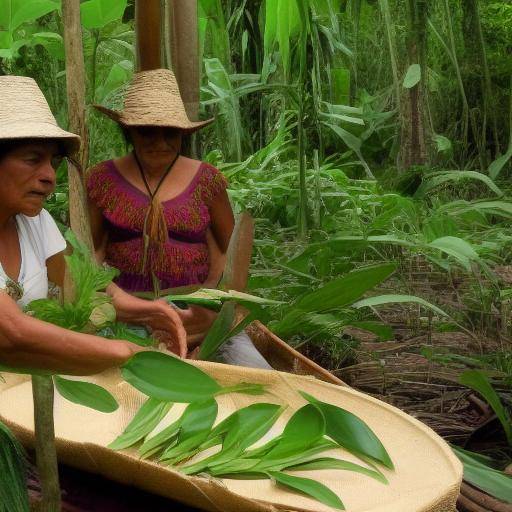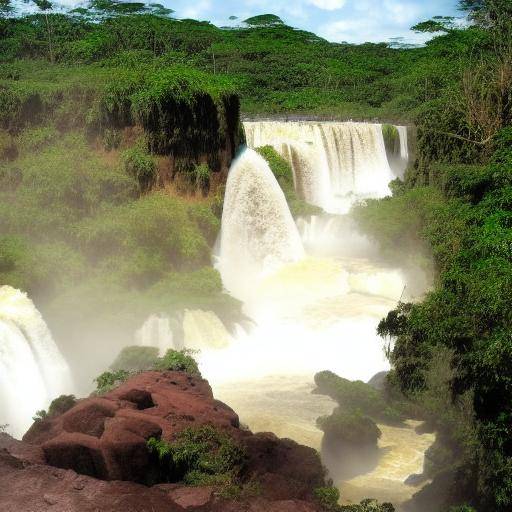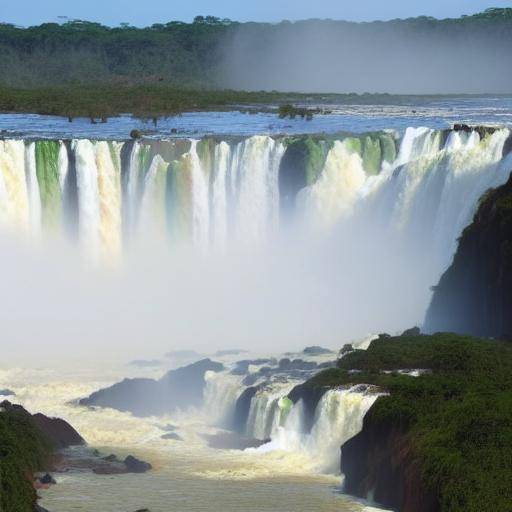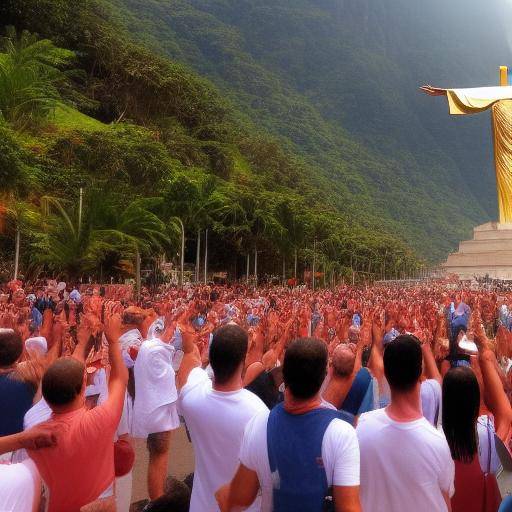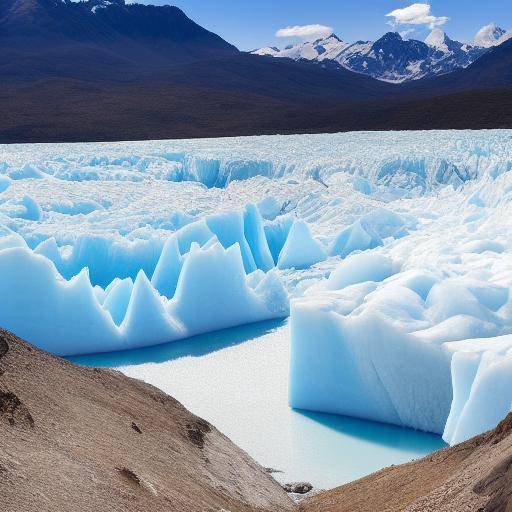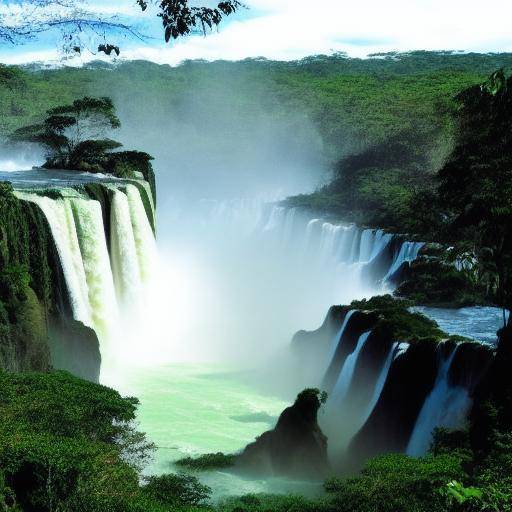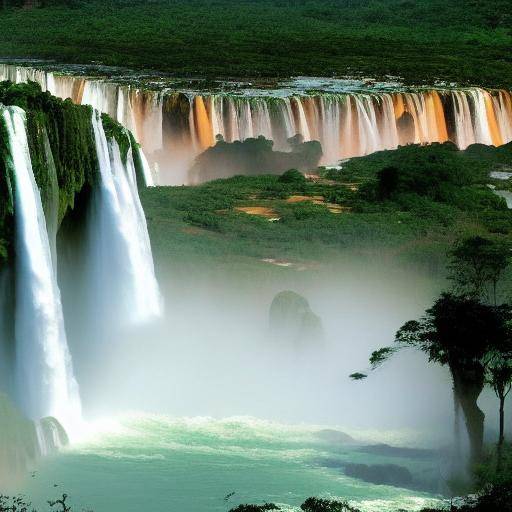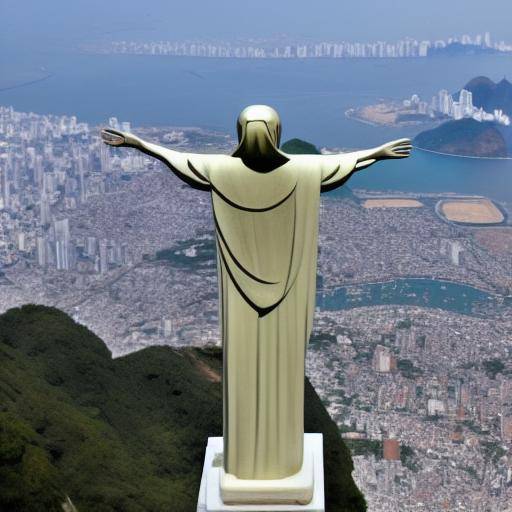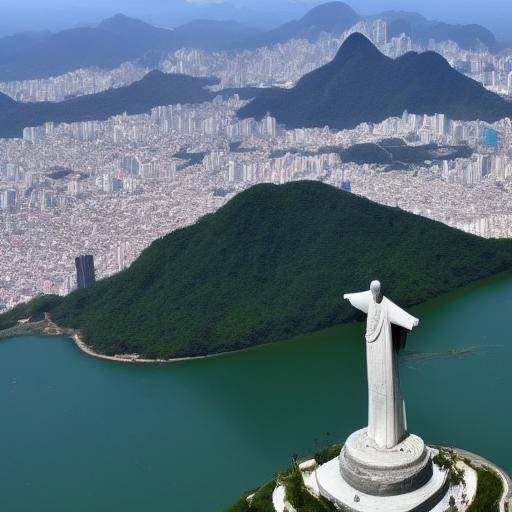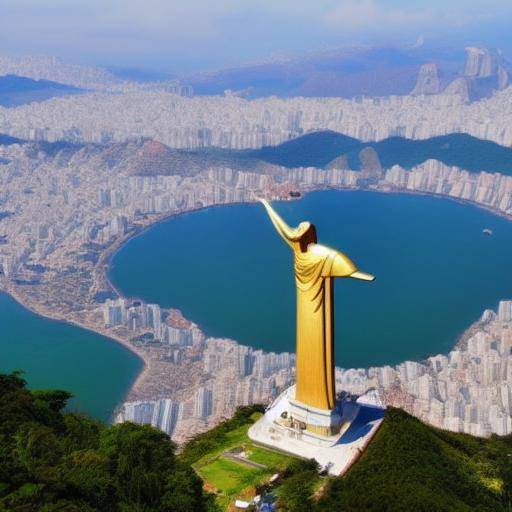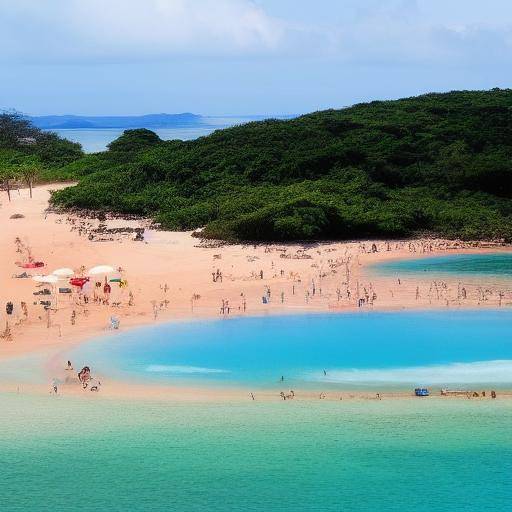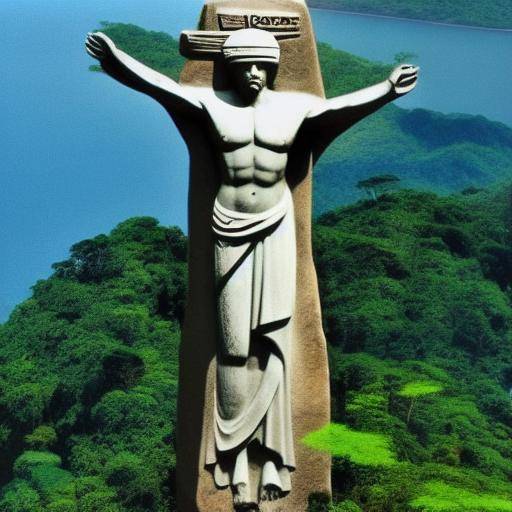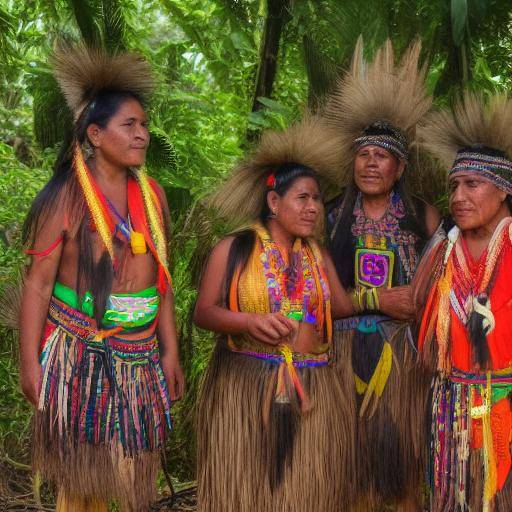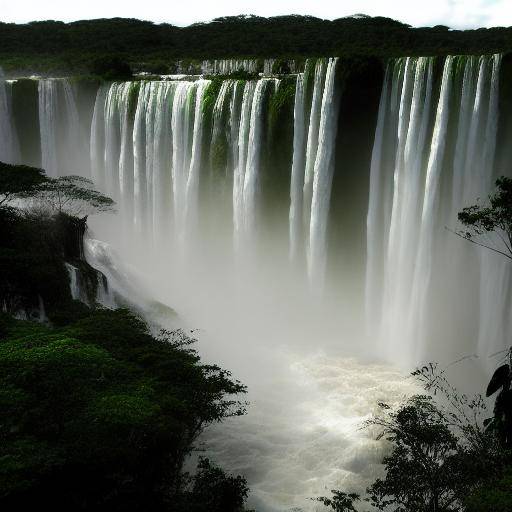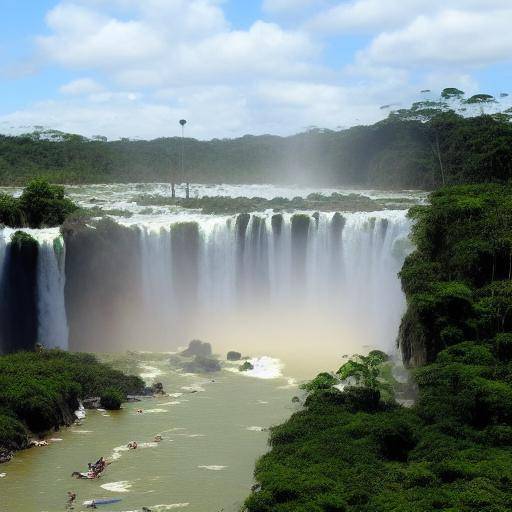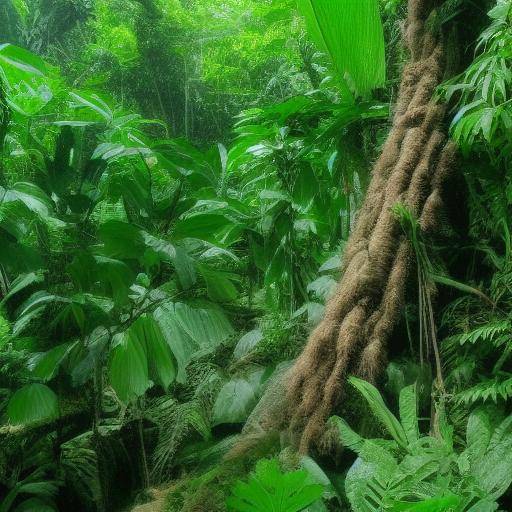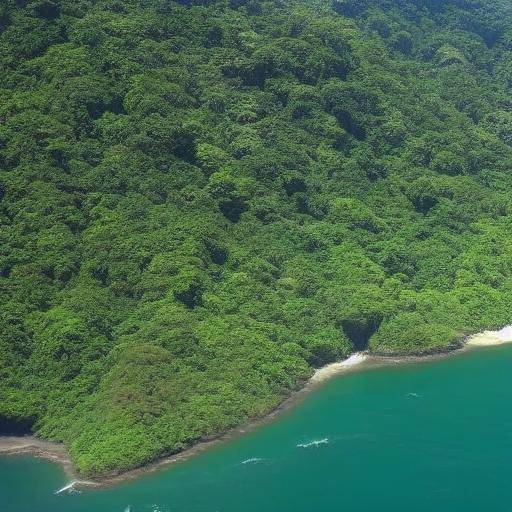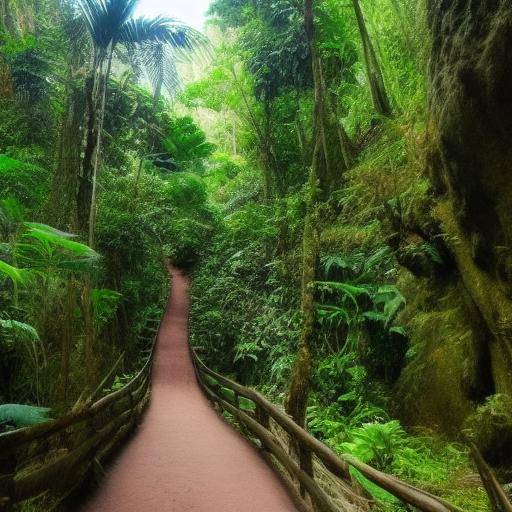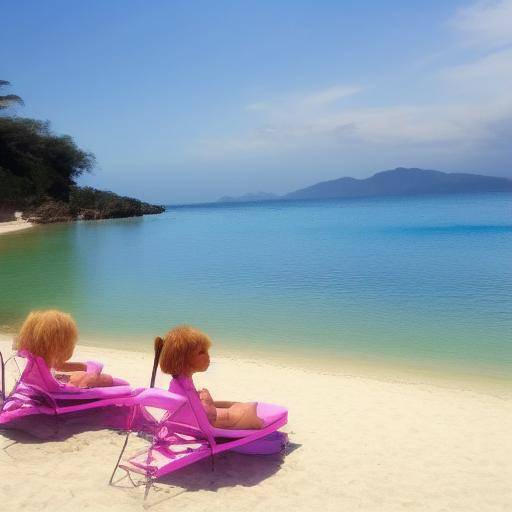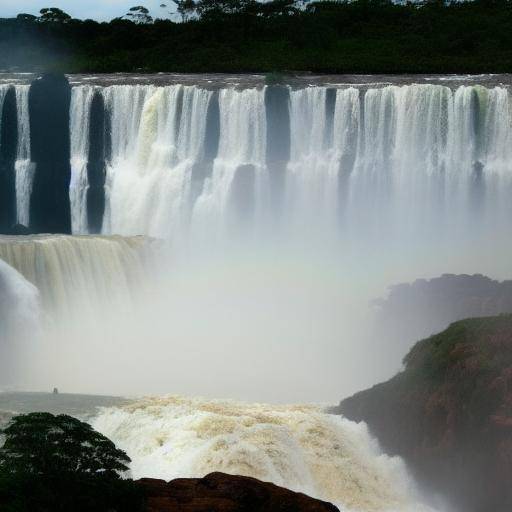
The majestic Iguazú Falls, located on the border of Argentina and Brazil, are one of the most impressive natural wonders in the world. This article presents a thorough exploration of the climate in the Iguazú Falls and its impact on the visitors' experience. From history and background to practical advice and future predictions, this analysis provides a complete overview of how the climate in this region influences the experience of tourists. Discover how seasonal variation and weather conditions contribute to beauty and access to this amazing natural heritage.
Introduction
The Iguazú Falls, declared a World Heritage Site by UNESCO, are an impressive show that attracts visitors from around the world. The combination of 275 dizzying waterfalls, lush vegetation and rich wildlife diversity makes this destination unique and unforgettable. However, climate plays a crucial role in the experience of visitors to the Iguazú Falls. From the intensity of the falls to the accessibility of the trails, the climate can significantly influence the perception and enjoyment of this wonderful natural environment.
History and Background
The cataracts of Iguazú, whose name comes from the Guaraní language and means "large water", were formed approximately 150 million years ago as a result of volcanic eruptions and tectonic movements. Since then, they have witnessed colonial history, European exploration and growing tourist interest.
Origin and Evolution
The western discovery of the cataracts is attributed to Alvar Núñez Cabeza de Vaca, a Spanish explorer, in 1541. During the following centuries, the cataracts became part of the territorial disputes between Spain and Portugal, with the region finally divided between Argentina and Brazil in the nineteenth century. This binational division added an additional aspect of appeal to the cataracts and made them an international tourist destination.
Significant issues
The global recognition of the Iguazú Falls as an iconic destination occurred with its inclusion in the UNESCO World Heritage List in 1984. This milestone not only consolidated its natural importance, but also promoted conservation and sustainable development initiatives.
Detailed Analysis
The climate in the Iguazú Falls is a determining factor in the experience of visitors. From the amount of water flowing through the falls to the visibility and comfort of the trails, the weather plays a crucial role in the appreciation and accessibility of this natural wonder.
Climate Influence in Cataracts
The seasonal climate has a significant impact on the falls. During the rainy season, which usually occurs between November and March, the flowing water volume reaches its peak, resulting in a spectacular display of strength and beauty. On the other hand, in the dry season, which covers the months of June to August, the flow of the cataracts decreases, revealing hidden rock formations and allowing access to areas that otherwise would be underwater.
Meteorological conditions
Climate conditions, such as temperature and humidity, also influence the comfort of visitors. During the warmer and humid months, visits can be exhausting, while in winter, the milder temperatures and the lowest risk of precipitation make the experience more pleasant.
Impact on Visitor Experience
Conscious knowledge of climate and conditions in Iguazú Falls is crucial to planning a rewarding visit. Tourists looking to witness the maximum power of the cataracts may prefer to visit them during the rainy season, while those who wish to explore the rock formations exposed can opt for the dry season.
Full review
The consideration of the climate goes beyond simply choosing the time of the year to visit the falls. Climate conditions also influence the surrounding vegetation, wildlife and tourist offer in general.
Flora and Fauna
The climate in the Iguazú Falls moulds the surrounding ecosystem. The plants flourish vigorously during the rainy season, creating a lush and colorful landscape. On the other hand, the dry season reveals a more spitting vegetation, providing the opportunity to observe a wider range of species of flora and fauna.
Sustainable tourism
Detailed knowledge of climate and its impact on the biodiversity of cataracts has led to sustainable tourism initiatives. The planning of tours and tourist activities is adapted according to weather conditions to minimize the negative impact on the natural environment.
Comparative analysis
Iguazú Falls are a phenomenon shared by Argentina and Brazil, which allows us to compare and contrast how the climate influences the visitor's experience in both countries.
Variances and Similarities
Although the overall climate in the region is subtropical, there are significant variations between seasons and weather patterns in the Argentine and Brazilian part of the falls. This can influence the preference of tourists on the one hand depending on their climate preferences and expectations of the visit.
Tourism infrastructure
The climate also impacts on tourist infrastructure, such as trails, viewers and support services, which can vary from one side of the border to another. The management of these climate differences is critical to providing a coherent and satisfactory experience to visitors on both sides.
Practical Tips and Accessible Tips
To maximize the experience in the Iguazú Falls, it is essential to take into account the weather and take certain precautions and informed decisions.
Preparation for the Visit
Visitors are advised to consult rain and temperature forecasts before planning the visit. Dressing properly and taking protection against rain and sun can make the difference in comfort and enjoyment of the experience.
Election of Moment
For those who wish to witness the cataracts in all their glory, the election of the season is fundamental. The knowledge of the climate in the region allows tourists to select the right time to meet their expectations.
Conclusions
The climate in the Iguazú Falls exerts a palpable influence on the experience of visitors, moulding the beauty and accessibility of this amazing natural destination. From the peak season to the revelation of rock formations, the climate adds a dynamic and exciting dimension to the visit to the falls. By understanding and appreciating the interaction between climate and this natural heritage, visitors can enrich their experience and better value the magnificence of the Iguazú Falls.
Frequently asked questions
1. What is the best time of the year to visit the Iguazú Falls?
The best time to visit the Iguazú Falls will depend on individual preferences. During the rainy season (November to March), you can see the maximum splendor of the cataracts, while at the dry season (June to August) you can explore more areas due to the lower amount of water.
2. What are the effects of climate on the accessibility of cataracts?
The climate directly influences the accessibility of cataracts. During the rainy season, some areas may be closed due to the high water flow, while at the dry season, areas that would normally be underwater are accessible.
3. How does the climate affect vegetation and wildlife in Iguazú Falls?
The climate significantly influences vegetation and wildlife in the Iguazú Falls. During the rainy season, vegetation is lush, and wildlife benefits from the abundance of water. In the dry season, vegetation can be scarcer, but it offers the opportunity to see a different diversity of species.
4. Is special preparation required to visit the falls during the rainy season?
During the rainy season, visitors are advised to be prepared for intense precipitation and high humidity. Appropriately dressing with waterproof clothing and anti-slip shoes is essential to fully enjoy the experience.
5. How would the climate change between the Argentine side and the Brazilian side of the falls?
While the general climate is subtropical on both sides of the cataracts, there may be differences in precipitation and temperature, which influences the appearance and access to the cataracts from each side.
6. Is it possible to have a successful experience in cataracts at any time of the year?
Yes, the Iguazú Falls offer an amazing experience all year round. The choice of the time of the visit will depend on individual preferences in terms of weather conditions and the appreciation of the cataracts in different contexts.
With these answers to frequently asked questions, visitors will be able to get valuable information on how the weather influences their visit to the Iguazú Falls and how to plan their experience more effectively.
In short, the climate in the Iguazú Falls plays a leading role in the visitor's experience, shaping the landscape, accessibility and appreciation of this natural wonder. By understanding and considering climate influences, tourists can optimize their visit and fully enjoy the unique grandeur and beauty offered by the Iguazú Falls. This comprehensive analysis demonstrates the significant impact of climate on this iconic destination and highlights the importance of incorporating this variable in travel planning to that region.

